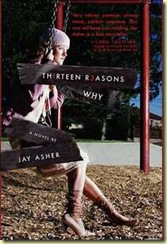Can I just talk about how much I love well-designed teen rooms?
Today I went to a workshop at a small public library in the south-western part of my state. Like many libraries in New England it was in a brick building that had been added on to in order to enlarge the library. They had a sizeable children's room which was comfortable, spacious, and bright but it was the teen room which I couldn't get over.
Granted it was a small space which probably wouldn't fit more than 15 teens at a time (and a tight squeeze at that) but the way it was designed and decorated made this aspiring teen librarian's day. Mainly because I'm a sucker for libraries that give teens their own seperate space--no matter what size.
So, like I said the space was on the small size but it was well-lit by a combination of overhead lights and a window. The bookshelves were on three of the walls with one long bookshelf sticking out to divide the space up. There were brightly patterned but not childish rugs on the floor along with comfortable cushions with backs for seating in addition to a sort of bar table for kids to sit at and do their homework. Mini-displays highlighting Teen Read Week and New YA Fiction along with movie posters on the wall finished off the room. And the room had full sight-lines from the reference desk.
It really made me happy to see because it was a creative use of a space that could have been turned into a storage area. But it also got me thinking about what is absolutely vital to a successful teen room?
Personally I think having a seperate area, whether it is open or enclosed is one of the most important if not
the most important features of a teen room. Then I would say that having the young adult collection in the room, decorating with posters of popular culture (music, movies, or even anime), as well as having comfortable and attractive seating are the next most important factors to a successful teen room.
Unfortunately I wasn't able to get pictures since I forgot my camera, but I'll bring it with me next week and post some up for you to see.


 R.A. Nelson, Days of Little Texas, 2009, Knopf.
R.A. Nelson, Days of Little Texas, 2009, Knopf.
